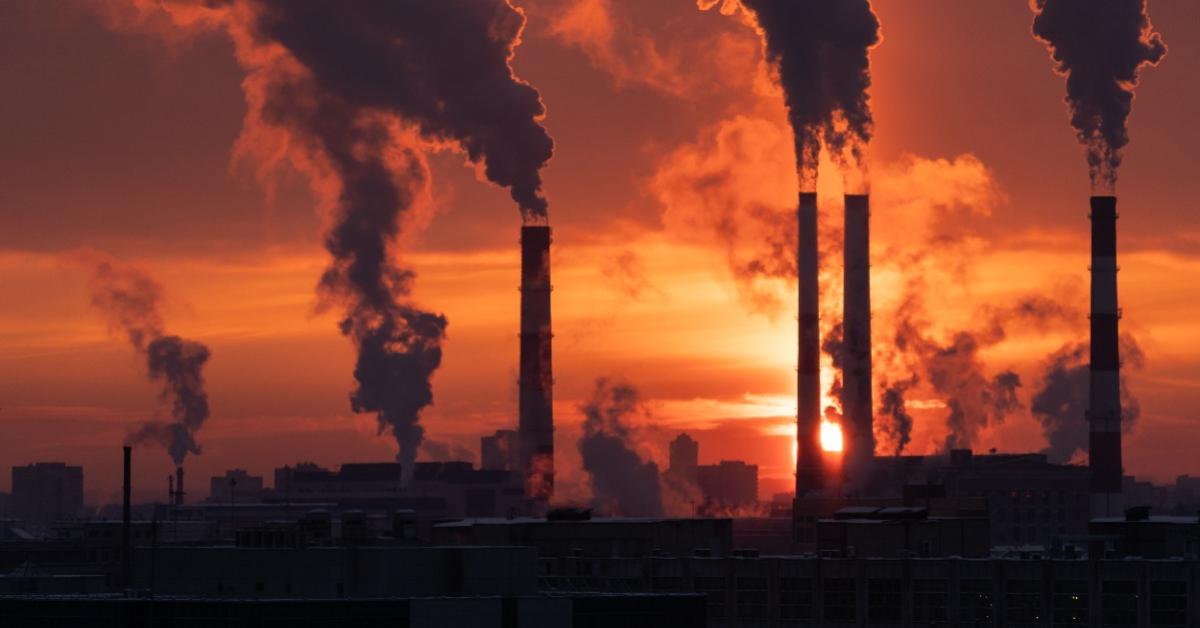
Many people are growing concerned about pollution and its growing effects on our environment and quality of life. So much so it seems, that politicians are now taking nuclear power much more seriously than previously. We’ve seen a greater push toward solar and wind power, as alternative and more renewable means of providing energy for national and global economies.
Despite this, actions toward the green economy are for naught; not just while the tragedy of the commons and eminent domain remain, but while monetary policy remains in favor of secular inflation.
Secular inflation is a term used to describe a state of affairs wherein the policy of the monetary authorities—in the UK’s case, the Bank of England—is to have a prolonged or gradual increase in prices via inflation targeting. The current target of the Bank of England sits at 2 percent, so the BoE aims to increase the money supply (MS) over the quantity demanded (MD) during each period to meet their price index targets of an increase by two percent.
This excess expansion of MS, leads to a decrease in the purchasing power of the pound, meaning that money is not as valuable as it was in the previous period, nor is it as valuable as that of the base year. The base year, also known as year 1, is the starting point for measuring changes in the price level and purchasing power of money. It is derived as being equal to 1.00. If the purchasing power of the pound decreases by 50 percent, then the price index in year 2 will be marked as 1.50; similarly, if the purchasing power increases by 50 percent, it is marked as 0.50.
From a secular inflation perspective, the value of money for one year holds an “expiration date” in the next year. This policy effect on environmental quality and progress can be examined using the Kuznets curve.
picture1.jpg
The Kuznets curve measures environmental quality by per capita income.
The curve shows that as economies begin to develop, environmental quality worsens, because new activities are being enacted which impact the environment, but there is not enough monetary productivity to incentivize the maintenance of the environment. As per capita income increases, the cost of maintenance or seeking renewable alternatives in proportion to income, allows for a cleaner environment to becomes a desired activity; as we become richer, we place a higher value on the environment and are more able to maintain it. This is shown by the location of low income and high income; denominated as LY and HY in relation to their relationship to the x and y axis.
The problem is that the Kuznets curve measures nominal income, rather than real income. Nominal income refers to the total quantity of current money (10 £50 notes = £500), whereas real income refers to the actual purchasing power of that £500.
If we refer to the current Consumer Price Index (9.1), the real value of the £500; by comparing the price index of June 2021 (111.3), to June 2022 (121.8) is roughly £456.89.
Meaning £500 M (nominal) from 2021 is worth £456.89 (£457 rounded) in m (real) in 2022. A reduction in real value by nearly £50 may not seem like a lot to politicians, but to people trying to make ends meet, this is a huge difference.
We can also see similar effects on the real level of income. Suppose average per capita income is £30,000. According to the curve measuring nominal income, a per capita income of £30,000 should see us shifting to the lower right corner of the curve. However, adjusting to the real level of income, we see that the real value of £30,000 is actually worth £27,413.79
This means that a nominal £30,000 level of income from 2021, holds a real value of £27413.79 level of income in 2022.
The trend of reduced real value can be shown further. Treating 2008 as the base year and looking toward the receding purchasing power of the pound, it can be observed how the pound has reduced in value over time:
picture2.png
Above we see a time plot of the real value of the pound from the period 2008 to 2022. The plot starts at the base year and looks at the value of the pound (measured in pence [p]) for each year in comparison to the previous year. For example, a nominal money balance of 100p in 2013 is worth 97.15 in real money balance terms, compared to nominal 100p in 2014, which is worth 98.10 in real balance terms.
We can also observe the contraction in real money balances as a comparison to the base year and further compare it to the year-by-year data:
picture3.png
In the graph the blue line represents the real value (m) of 100p on a year-by-year comparison (the real value of 100p in 2009 compared to the real value of 100p in 2010 etc.), whereas the red line represents the onwards reduction in the real value of 100p compared to the previous year’s real value, from the point of the base year.
To give an example of this, in the period 2008/09, the real value of 100p compared to the base year was 93.84, whereas in 2009/10, the real value of that 93.84 in the next year was 92.02.
A similar phenomenon can be observed with regards to wages. Supposing the median nominal income is £30,000, we can see the change in the real value of the median income over the period from 2008 to 2022:
picture4.png
Here we see the real value of income from 2009 to 2022, where 2008 is treated as the base year. During the aftermath of the 2008 financial crises, we see the real value of £30,000 drop from £29,480.97 in 2009 to £28,778.14 in 2011. The largest fall in real value occurred after the financial costs of the covid lockdown, where the real value of £30,000 in 2022 is £27,413.79.
Translated back to the Kuznets curve, then, it can show the following:
picture5.jpg
By adjusting nominal to real, we see that the slope of the curve rises and overall shifts further to the upper right. Meaning that adjusted to real money balances, renewal of the environment becomes a lot less affordable for the average person. As time moves on with a policy of secular inflation in place, the value of the £30,000 wage decreases, and people need to acquire higher nominal balances each year in order to reach previous levels of real income; ad infinitum.
This means that we are always a step behind (or according to the CPI, 9.1 steps behind) when it comes to environmental quality. This leads to one of the many costs of inflation; protection.
When people expect inflation to rise or to be constant, they spend resources to protect the value of their assets from the effects of inflation. This is in the form of personal finances, investing in precious metals such as gold or silver, or seeking advice from accountants.
While this type of activity is rational to the person(s) looking to protect themselves, it is also wasteful compared to the value that could’ve been satisfied had there been no inflation to begin with. This further adds to slowing down the process of per capita incomes moving to the right of the curve, because the loss of purchasing power for financial capital, diverts resources to “wasteful” endeavors.
Our current policy of price stability by injecting excess money into the economy, as an attempt to avoid deflating prices, provides us with the very effects that slow the Kuznets curves process; a rise in output prices which detract from falls in unit production costs.
If we want to take environmental degradation, and improving the environments quality seriously, then it is important to address secular inflation and abandon the policy of inflation targeting, in favor of a productivity norm to allow for growth deflation, financial stability and a reduction in unit production costs to spur on reduced output costs.



